Header image from National Park Service, Indiana Dunes National Park, Porter, Indiana.
Indiana was admitted to the Union on December 11, 1816 as the 19th state.
Bird: Cardinal
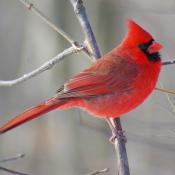
Unlike many other songbirds in North America, both the male and female cardinals can sing. Usually, only a male songbird is capable of singing. When a female cardinal sings from the nest, it usually means she’s telling the male she needs more food. Cardinals mate for life. A group of cardinals has many collective nouns, including a “college”, “conclave”, “deck”, “radiance”, and “Vatican” of cardinals.
The cardinal is the mascot of prominent sports teams and schools, including the St. Louis Cardinals (baseball) and Arizona Cardinals (football); it is the state bird of seven states, more than any other bird: Illinois, Indiana, Kentucky, North Carolina, Ohio, Virginia, West Virginia
Flower: Peony
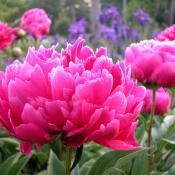
The traditional floral symbol of China, the state flower of Indiana, and the 12th wedding anniversary flower, peonies are known as the flower of riches and honor. With their lush, full, rounded bloom, peonies embody romance and prosperity and are regarded as an omen of good fortune and a happy marriage. The peony is named after Paeon (also spelled Paean), a student of Asclepius and the Greek god of medicine and healing. In Greek Mythology, when Asclepius became jealous of his pupil, Zeus saved Paeon from the wrath of Asclepius by turning him into the peony flower.
Tree: Tulip Poplar
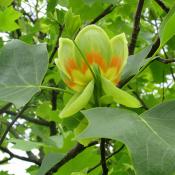
The tulip poplar (Liriodendron Tulipifera) was designated the official state tree of Indiana in 1931 (Tennessee and Kentucky also recognize tulip poplar as their official tree symbol).
The tulip poplar is not actually a poplar tree, but a member of the magnolia family. The tulip poplar leaf has a unique, distinct shape (it appears in the border of the Indiana state seal), and produces huge, bell-shaped greenish-yellow with orange flowers in the spring.
Also called yellow poplar, tulip tree, or canoe tree (because Native Americans used it to make dugout canoes), tulip poplars can be found throughout the state of Indiana.
State Quarter
From theus50.com
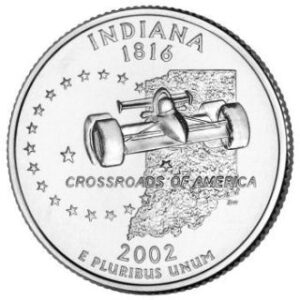
The Indiana quarter represents the state pride in the famous Indianapolis 500 race. The design features the image of a racecar superimposed on an outline of the state with the inscription “Crossroads of America.” The design also includes 19 stars signifying Indiana as the 19th state admitted into the Union.
The Indianapolis Motor Speedway is a 2.5 mile track built in 1909 for automotive research purposes. While the track was and is used for research, it is best known for hosting auto races, most famously, the Indy 500. The oldest auto race in the world, the Indy 500 has been run every year since 1911, except during the two World Wars. The winner of the first Indy 500 was Ray Harroun whose car, the Marmon Wasp, is thought to have been the first to have a single seat and to use a rearview mirror. In the time since Harroun’s victory, the Indy 500 has become an international event, synonymous with auto racing.
Capital: Indianapolis
Nickname: Hoosier State (Several possible explanations: John Finly wrote a poem in 1833 called “The Hoosier’s Nest”; other stories trace the origin of the term to gangs of workers from Indiana under the direction of a Mr. Hoosier. and others suggest it originated from census workers calling “Who’s here?”)
Motto: Crossroads of America” *
Indiana means, “Land of the Indians”
Indiana Facts and Trivia
Indiana is 36,418 square miles, ranking 38th in size. It is 140 miles W-E and 270 miles N-S.
Ft. Wayne, Indiana’s 2nd Largest city, had its beginnings in 1794, after the Battle of Fallen Timbers, when General “Mad Anthony” Wayne built Ft. Wayne on the site of a Miami Indian village.
Explorers Lewis and Clark set out from Fort Vincennes on their exploration of the Northwest Territory.
William Henry Harrison (who later became the 9th president of the U. S. in 1841) became the first territorial governor of the Indiana Territory in 1801-1812. He resigned to fight in the War of 1812. Between 1803 and 1809, Harrison supervised eleven treaties with Indian leaders that provided the federal government with large tracts of land (more than 60,000,000 acres) that included the southern third of present-day Indiana and most of present-day Illinois for further settlement.
The Battle of Tippecanoe was fought on Nov 7, 1811 in what is now Battle Ground, Indiana. (Event which led to the political phrase “Tippecanoe and Tyler, too” in the presidential campaign of 1840 in which Harrison was elected with John Tyler as his Vice-President)
Indiana was admitted to the Union on December 11, 1816 as the 19th state.
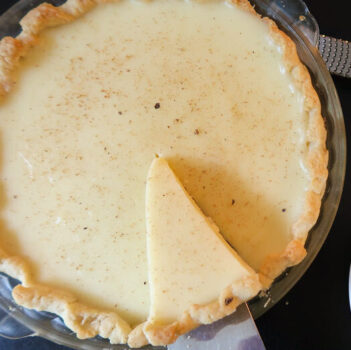 The earliest recorded Sugar Cream Pie recipe was from 1816, which is also the year the state was founded. Also called “desperation pie”. Today the pie is a staple in the Midwest, especially in the Indiana region. Wick’s Pies, a popular baking company in Indiana, bakes around 10,000 pies a day, with 75% of them being Hoosier sugar cream pie. Their sugar cream pies feature a crispy and caramelized sugar topping and it is the perfect ending to a Sunday Supper.
The earliest recorded Sugar Cream Pie recipe was from 1816, which is also the year the state was founded. Also called “desperation pie”. Today the pie is a staple in the Midwest, especially in the Indiana region. Wick’s Pies, a popular baking company in Indiana, bakes around 10,000 pies a day, with 75% of them being Hoosier sugar cream pie. Their sugar cream pies feature a crispy and caramelized sugar topping and it is the perfect ending to a Sunday Supper.
Before Indianapolis, Corydon served as the state’s capitol from 1816-1825. Vincennes was the capital when Indiana was a territory.
The University of Notre Dame was founded in November 1842 by Rev. Edward F. Sorin, C.S.C., a priest of the Congregation of Holy Cross, a French missionary order. It is located adjacent to South Bend, Indiana, and is well-known for the Notre Dame Fighting Irish football team.
At one time Studebaker Company of South Bend was the nation’s largest producer of horse-drawn wagons. It later developed into a multimillion-dollar automobile manufacturer. The Studebaker Museum web-site has pictures from the 1852 blacksmith shop to 1960’s.
In 1862, Richard Gatling, of Indianapolis, invented the rapid-fire machine gun.
The first professional baseball game was played in Fort Wayne on May 4, 1871.
Crawfordsville is the home of the only known working rotary jail in the United States. The jail with its rotating cellblock was built in 1882 and served as the Montgomery County jail until 1972. A rotary jail was an architectural design for some prisons in the Midwestern United States during the late 19th century. Cells in the jails were wedges on a platform that rotated in a carousel fashion. The surrounding of the entire level had a single opening, allowing only one cell at a time to be accessible. It is now a museum.
From 1900 to 1920 more than 200 different makes of cars were produced in the Hoosier State. Duesenbergs, Auburns, Stutzes, and Maxwells – are prize antiques today.
The first long-distance auto race in the U. S. was held May 30, 1911, at the Indianapolis Motor Speedway. The winner averaged 75 miles an hour and won a 1st place prize of $14,000. Today the average speed is over 167 miles an hour and the prize is more than $1.2 million. Indianapolis Motor Speedway is the site of the greatest spectacle in sports, the Indianapolis 500. The Indianapolis 500 is held every Memorial Day weekend in the Hoosier capital city. The race is 200 laps or 500 miles long. From 1972-2014 Jim Nabors took part in the opening ceremonies by singing “Back Home Again in Indiana”.
Back home again in Indiana
And it seems that I can see
The gleaming candlelight
Still burning bright
Through the sycamores for me
The new-mown hay sends all its fragrance
Through the fields I used to roam
When I dream about the moonlight on the Wabash
How I long for my Indiana home.
 Marcella Gruelle of Indianapolis created the Raggedy Ann doll in 1914.
Marcella Gruelle of Indianapolis created the Raggedy Ann doll in 1914.
In Fort Wayne, Syvanus Freelove Bowser designed the world’s first practical gasoline pump.
Historic Parke County has 32 covered bridges and is the Covered Bridge Capital of the world.
True to its motto, “Cross Roads of America” Indiana has more miles of Interstate Highway per square mile than any other state. The Indiana state Motto, can be traced back to the early 1800s. In the early years river traffic, especially along the Ohio, was a major means of transportation. The National Road, a major westward route, and the north-south Michigan Road crossed in Indianapolis. Today more major highways intersect in Indiana than in any other state.
Most of the state’s rivers flow south and west, eventually emptying into the Mississippi. However, the Maumee flows north and east into Lake Erie. Lake Wawasee is the states largest natural lake.
Indiana’s shoreline with Lake Michigan is only 40 miles long.
Deep below the earth in Southern Indiana is a sea of limestone that is one of the richest deposits of top-quality limestone found anywhere on earth. New York City’s Empire State Building and Rockefeller Center as well as the Pentagon, the U.S. Treasury, a dozen other government buildings in Washington D.C. as well as 14 state capitols around the nation are built from this sturdy, beautiful Indiana limestone.
Weird Laws
Like most states, Indiana has several laws still on the books which are not enforced:
You are not permitted to take baths between October and March.
Horses have the right-of-way. It is illegal to pass a horse.
In Gary, you must wait four hours after eating garlic before going to a show, a movie, or using public transportation.
People:
Indiana has been home to 6 vice presidents and one president:
Abraham Lincoln moved to Indiana when he was 7 years old. He lived most of his boyhood life in Spencer County with his parents Thomas and Nancy.
Vice-President Schuyler Colfax for President Ulysses Grant, 1869-1873
Vice-President Thomas Hendricks for President Grover Cleveland, 1885-1885 (died in office)
Vice-President Charles W. Fairbanks for President Theodore Roosevelt, 1905-1909
Vice-President Thomas R Marshall for President Woodrow Wilson, 1913-1921
Vice-President Dan Quayle for President George H. W. Bush, 1989-1993
Vice-President Mike Pence for President Donald Trump, 2017-present
- Show business
- Leon Ames, actor
- Anne Baxter, actress
- Hoagy Carmichael, songwriter
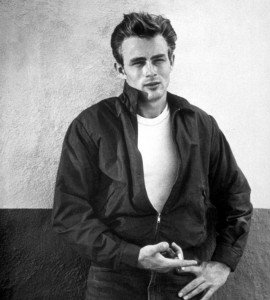 James Dean, actor
James Dean, actor- Phil Harris actor, band leader
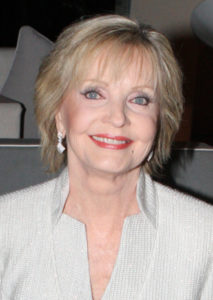 Florence Henderson, actress
Florence Henderson, actress - Michael Jackson, singer
- Buck Jones, actor
- David Letterman, TV host, comedian
- Carole Lombard, actress
- Shelley Long, actress
- Marjorie Main, actress
- John Cougar Mellencamp, singer,songwriter
- Cole Porter, songwriter
 Red Skelton, comedian
Red Skelton, comedian- Forrest Tucker, actor
- Other
- Bill Blass, fashion designer
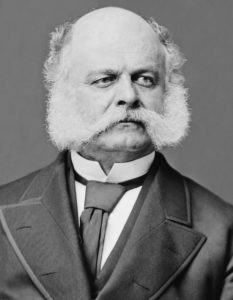 Ambrose Burnside, American soldier, railroad executive, inventor, industrialist, and politician
Ambrose Burnside, American soldier, railroad executive, inventor, industrialist, and politician- Eugene V. Debs, Socialist leader
- Theodore Dreiser, writer
- Virgil Grissom, astronaut
- Thomas Hendricks, a Democrat from Shelbyville, served Indiana as a United States Senator, a United States representative, governor, and as Vice President under Grover Cleveland.
- James R. Hoffa, labor leader
- Eli Lilly, pharmaceuticals
- Ernest Taylor Pyle, journalist
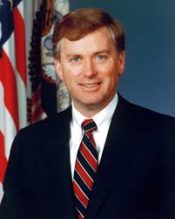 J. Danforth Quayle, vice president
J. Danforth Quayle, vice president- James Whitcomb Riley, poet
- Mark Spitz, swimmer, Olympic winner of 7 gold medals in 1972
- Rex Stout, mystery writer
- Booth Tarkington, author
- Gilbert VanCamp, grocer, opened a canning company for VanCamp’s pork and beans.
- Kurt Vonnegut, Jr., author
- Jessamyn West, author
- Wendell Willkie, lawyer
- Wilbur Wright, inventor
Music:
On the Banks of the Wabash, Far Away (State Song)
Back Home Again in Indiana by Jim Nabors
Goin’ Back to Indiana by Jackson 5
Can’t Get Indiana Off My Mind by Crystal Gayle
Credits:
See 50 states.com
See Only in your State A good place to help you plan your trip to Indiana.
See Ducksters
